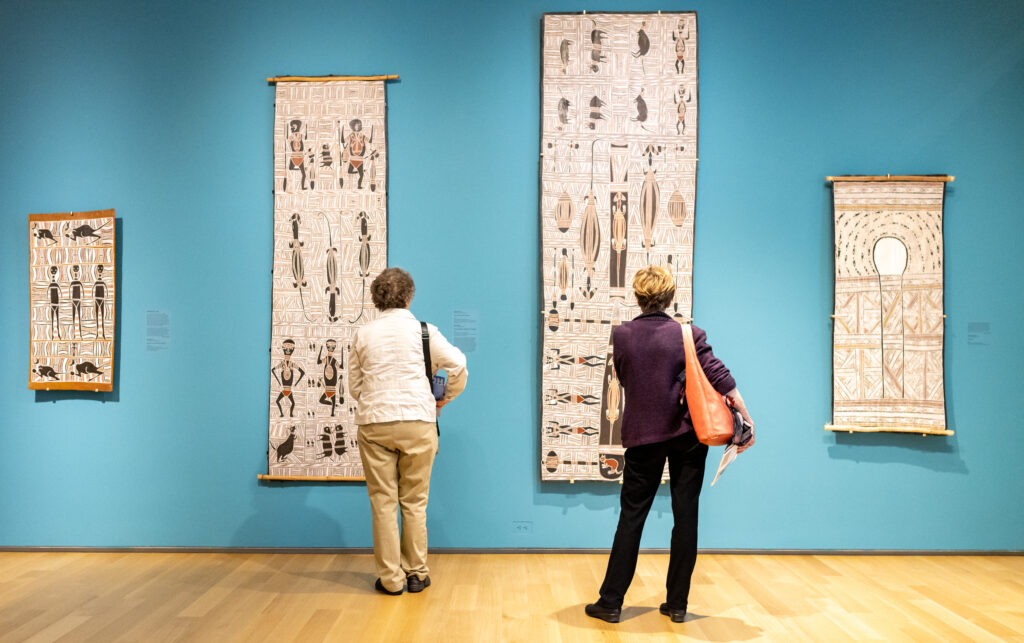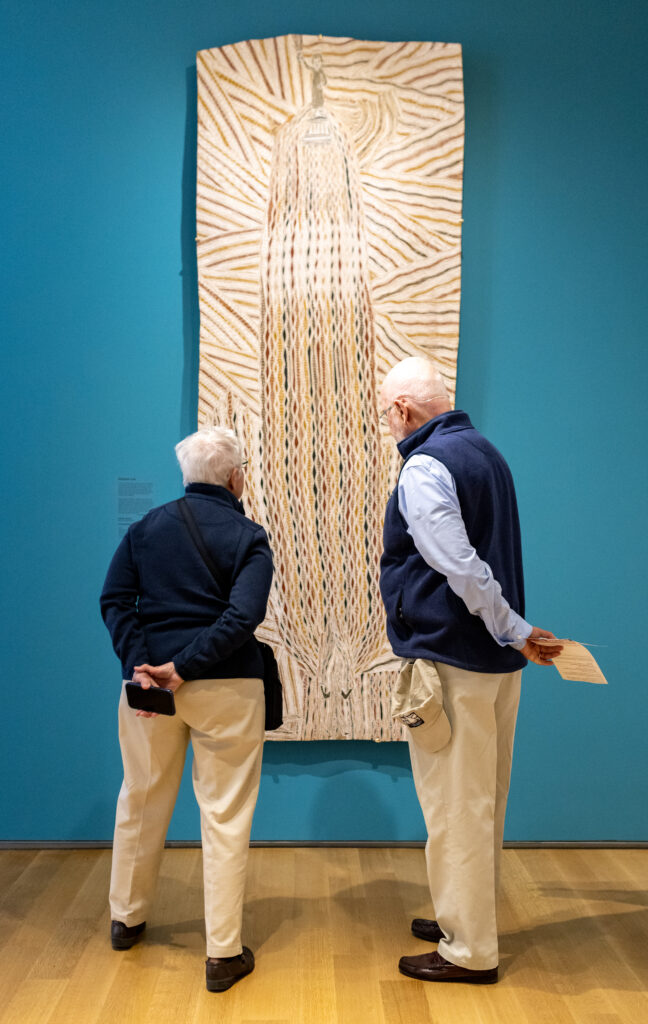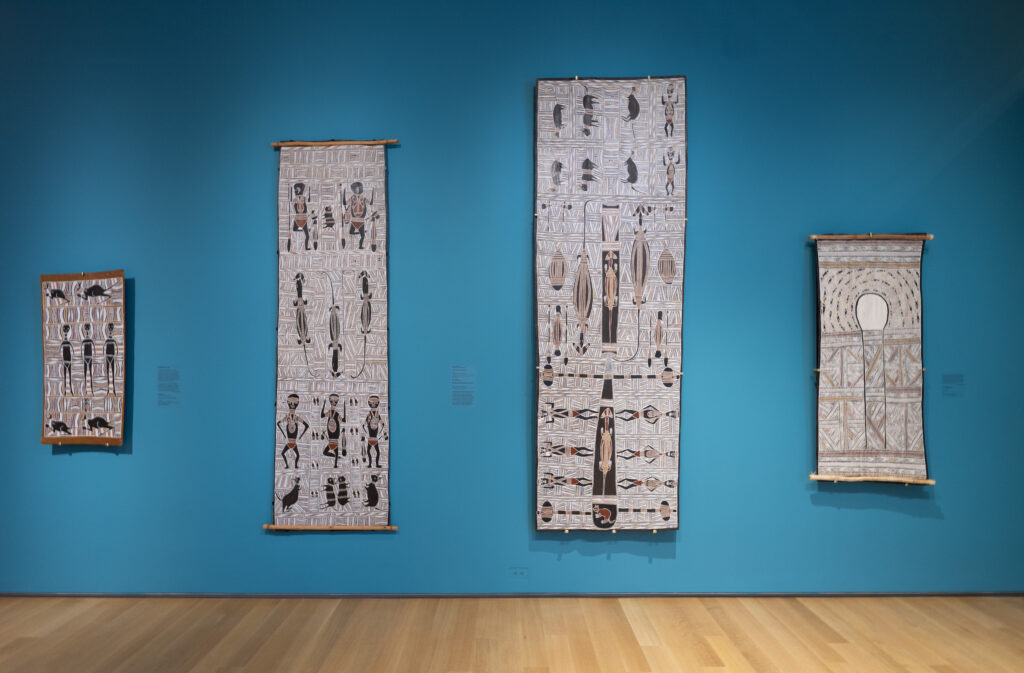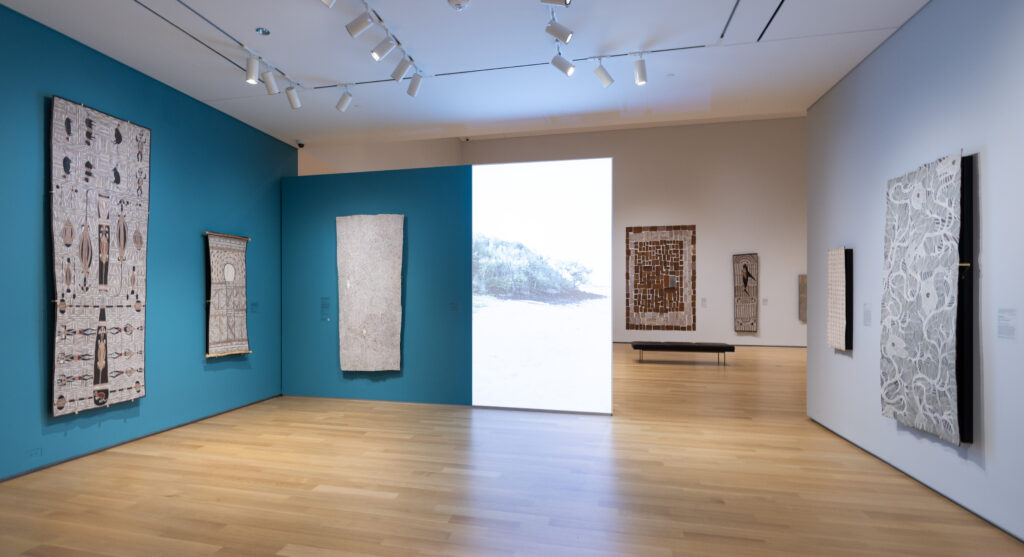
Hanover’s very own Hood Museum of Art is hosting Madayin: Eight Decades of Aboriginal Australian Bark Painting from September 3 until December 4. The exhibit hails from northern Australia and is the first major collection of Aboriginal Australian bark paintings to tour in North America. Sixteen tribes wished for their elders to have a painting featured, which resulted in a mixture of art that was selected and art that was commissioned specially for the series.
Upon entering the gallery, guests are given some history about the relationship between Western civilization and Aborignal Australian bark painting. In the fall of 1932, the elders of the Djapu’ clan were disrespected by five Japanese fishermen. The actions of these fishermen resulted in their death. When the police were sent to investigate, Constable Albert McColl was also killed. The three sons of Djapu’ clan leader Woŋgu Munuŋgurr were arrested and found guilty of the murders. A fourth man, Dhäkiyarr Wirrpanda, was arrested as well but mysteriously disappeared after being acquitted at the trial. Rumors circulated that McColl’s colleagues were responsible for Wirrpanda’s disappearance. As tensions in the region were rising, anthropologist Donald Thomson formed a relationship with Woŋgu and his sons while they were still in prison. Thomson negotiated the release of the Munuŋgurr sons in exchange for Woŋgu’s promise to keep the peace in northeast Arnhem land, known to those who inhabit it as Miwatj. The first painting on display in the exhibit was one of many gifts to Donald Thomson from the Munuŋgurr family. The art is from the year 1935, but the patterns and designs featured in the painting are far older.
The front of the exhibit shows a statement from Wukuṉ Waṉambi, one of the curators for the collection. “We have shared these paintings to give you an understanding of our world. If you are expecting to learn everything about the meaning of the many designs and how they relate to song cycles and ceremony, then you are mistaken. We cannot explain everything. Like the surface of the water, beneath is an ocean of knowledge. We can only show you the surface,” says Waṉambi. The sacred layers of meaning underneath the surface of the paintings are not ours to know.
The stories within the bark paintings are cornerstones of each tribe’s way of life and tradition. Displaying such an intimate form of cultural expression was a challenge for not only the curators, but the artists themselves. These paintings, as in the example of the Munuŋgurr family and anthropologist Donald Thomson, were often given as precious gifts. The artists viewed their work as a gift with the intention to transport their homeland to audiences in North America.
Henry Skerritt, curator of the Indigenous Arts of Australia at the Kluge-Ruhe Aboriginal Art Collection of the University of Virginia, told Dartmouth students about the difficulties his team faced in transferring this collection to North America. In fact, Skerritt says, Australian legislation was changed to allow for the paintings to leave the continent and travel to the United States. The regulations of the Protection of Movable Cultural Heritage Act 1986 were altered to recategorize certain Aboriginal bark paintings so they could be exported out of the country.

Beyond legal challenges, the curators of Maḏayin: Eight Decades of Aboriginal Australian Bark Painting faced a unique challenge with fusing aesthetics and culture. Ultimately, the story told within the exhibit overpowered the desire for aesthetic beauty. Though there are more than 90 paintings in the exhibit, works of art were removed from the initial collection during the process of curation due to their lack of coherence with the overarching themes of the collection. Other pieces, Skerritt said, were too sacred to be on display for the masses. The goal of curation was to represent one body of kinship. Each painting is a story told with the intention of communicating a story from one generation to the next.
Some of these works were commissioned at the moment a gap was noticed in the greater story that the curator wanted to tell. The artwork on the paintings contains the same symbols, themes, and mediums that Australian Aboriginals have employed for centuries to pass down legends to the next generation. In the entirety of the collection, only one, very blue, painting features acrylic paint. All other paints were pigments ground from ochre clay and mixed with water to display on the canvas of bark.
There are many important works throughout the exhibit, but my personal favorite was Americalili Marrtji | Journey to America which depicts the Statue of Liberty. The artist, Djambawa Marawill, depicts a faraway land in the artform familiar to his native people. In giving his clan the gift of this painting, Marawill shares with them a piece of America. How grateful we are, then, to receive a fraction of the rich tradition to be found within Maḏayin.


